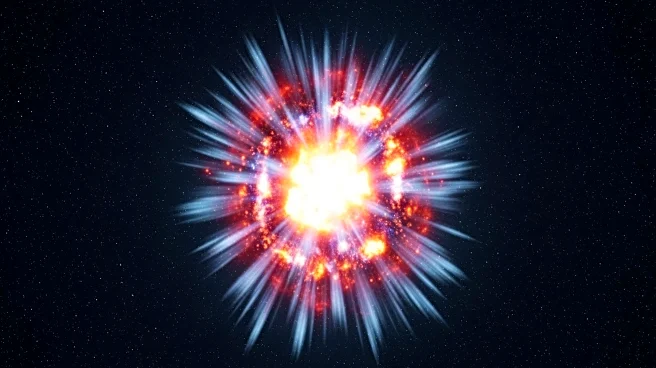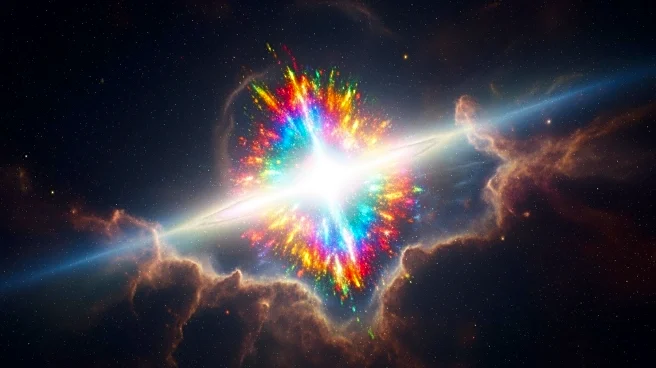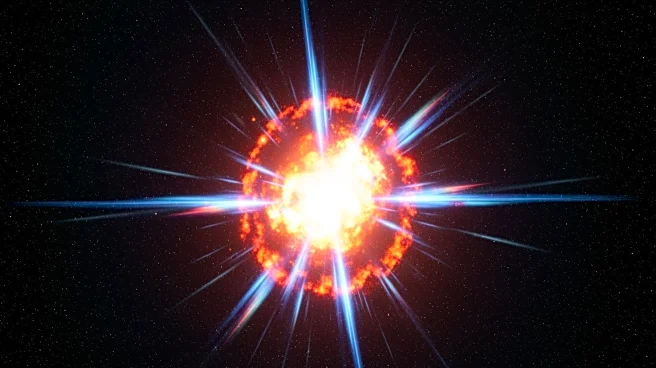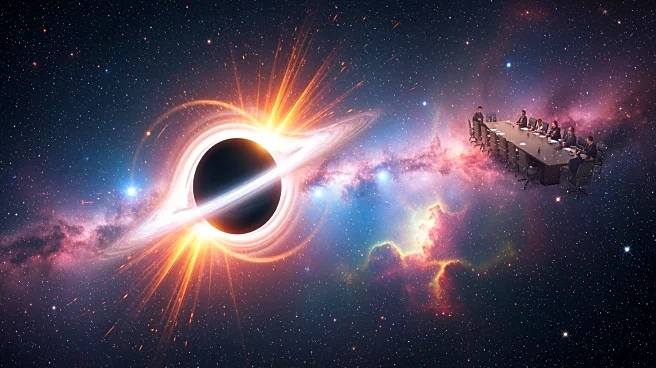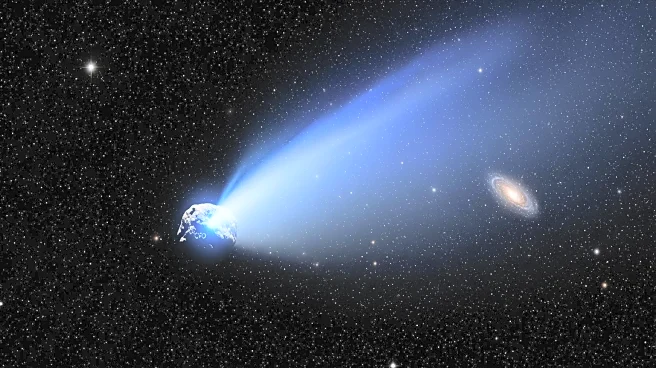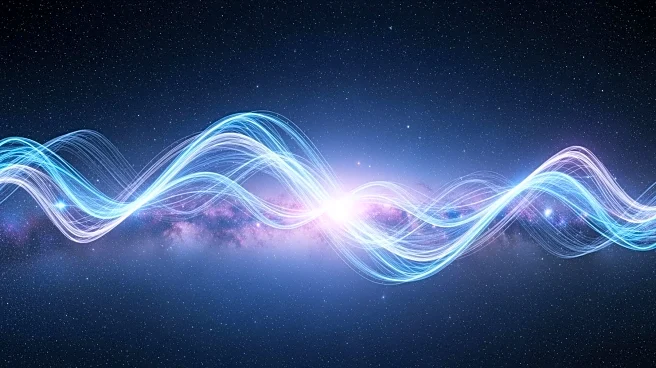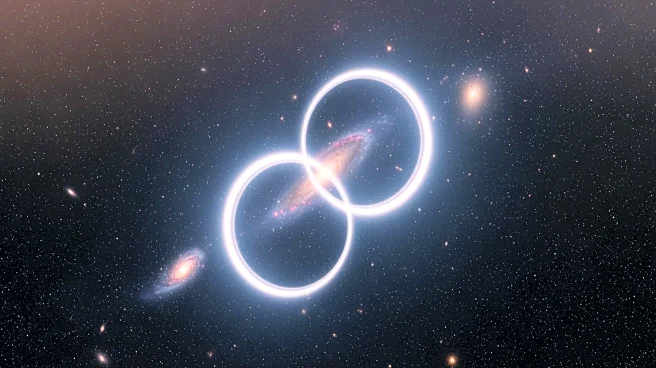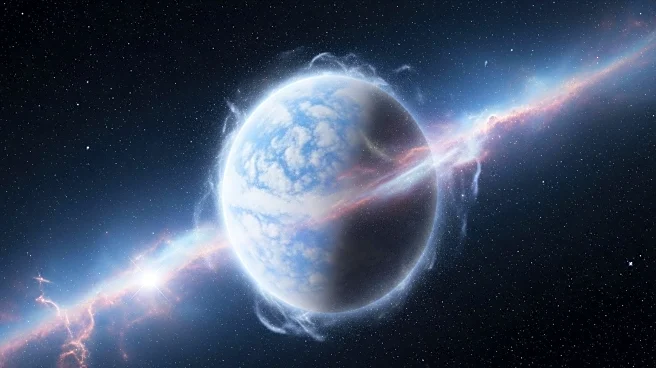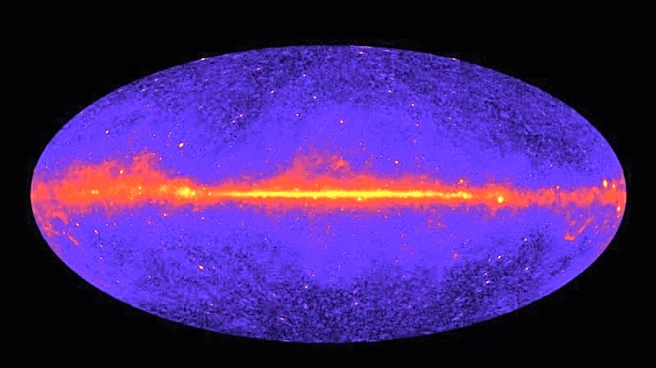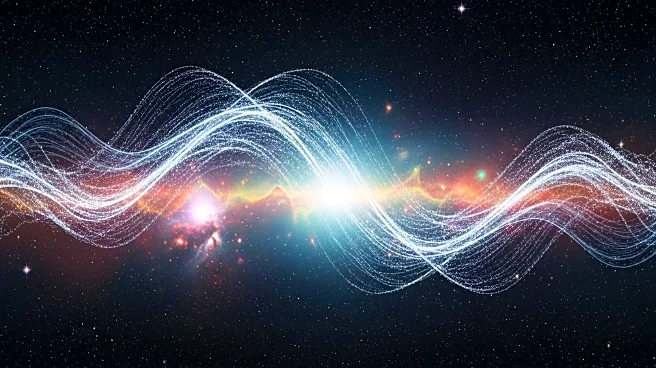What's Happening?
Astronomers have reported the longest gamma-ray burst ever recorded, labeled GRB 250702B, which lasted approximately 7 hours. This event was first detected by NASA's Fermi telescope on July 2, 2025. Unlike
typical gamma-ray bursts (GRBs) that occur when a massive star collapses into a black hole, GRB 250702B is believed to have been caused by a preexisting black hole merging with a partner star. This merger created an accretion disk and powered jets from deep within, resulting in the unprecedented duration of the burst. The event's characteristics, such as rapid flickers and high-speed jets, suggest a compact engine, likely a stellar mass black hole, rather than a supermassive one.
Why It's Important?
The discovery of GRB 250702B challenges existing theories about gamma-ray bursts, particularly the mechanisms that can sustain such long durations. This event suggests that helium mergers, where a black hole falls into a stripped star, could be responsible for some ultra-long GRBs. Understanding these mechanisms is crucial for astrophysics, as it could redefine the known limits of collapsars and provide insights into the conditions that favor such events. The findings also highlight the importance of crosschecking data from multiple instruments, as this event was confirmed through gamma rays, X-rays, and infrared spectra.
What's Next?
Further studies are needed to confirm the exact cause of GRB 250702B and to explore the potential of helium mergers in producing ultra-long GRBs. The upcoming Rubin Observatory, with its rapid and repeated sky surveys, may help detect similar events and provide more data for analysis. Continued monitoring and testing will be essential to refine the understanding of these cosmic phenomena and their implications for the broader universe.
